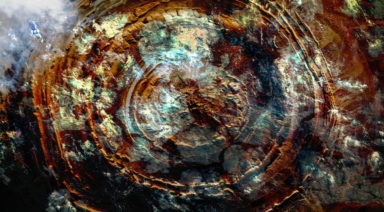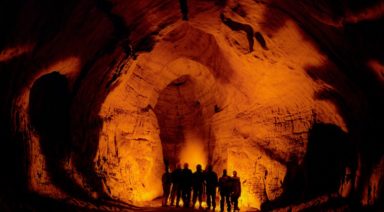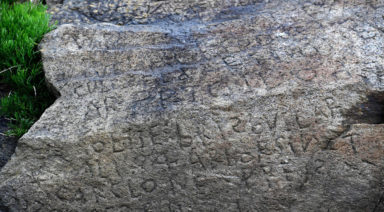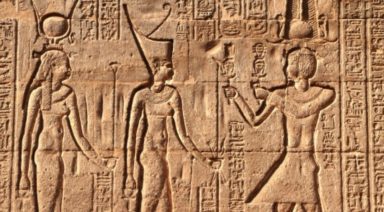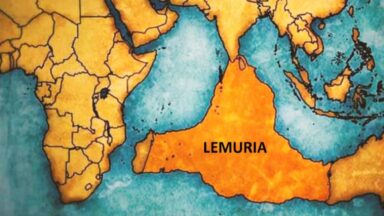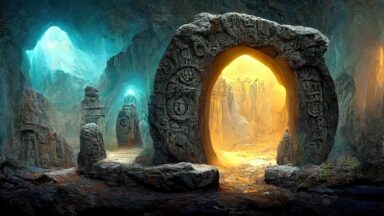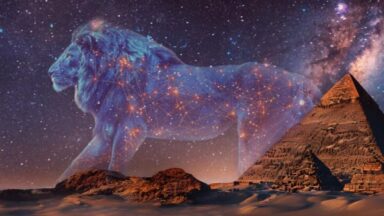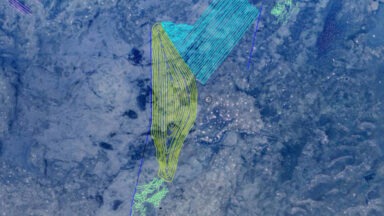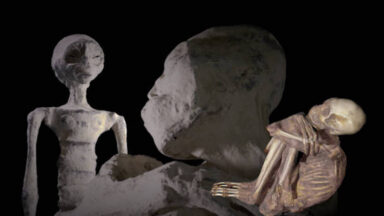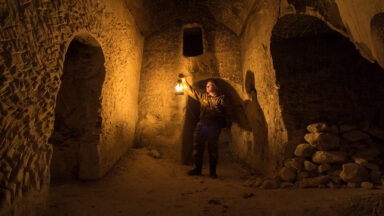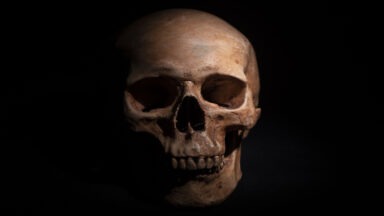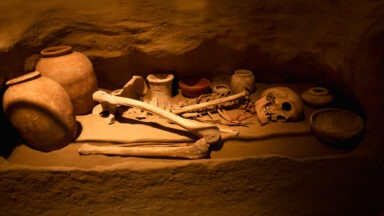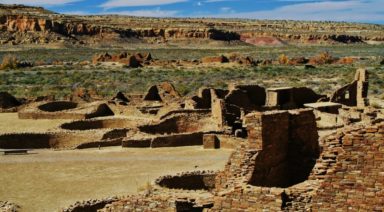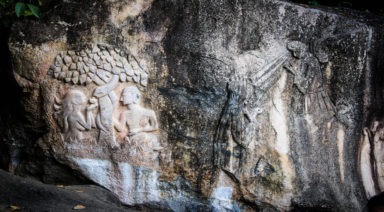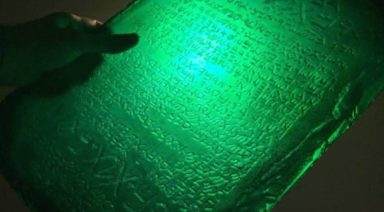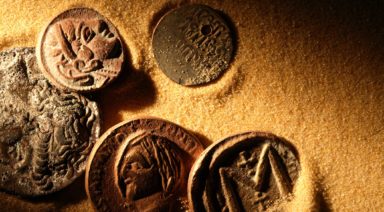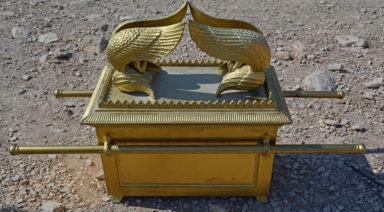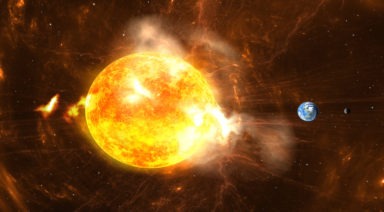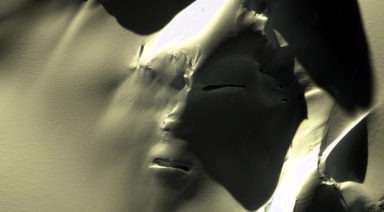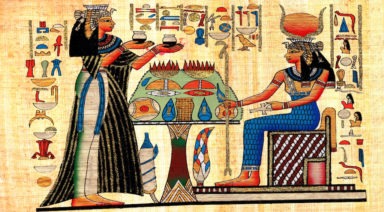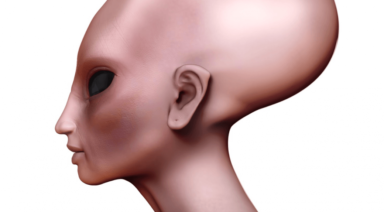Merkabah Mysticism; The Mystery Behind Ezekiel’s Biblical Vision
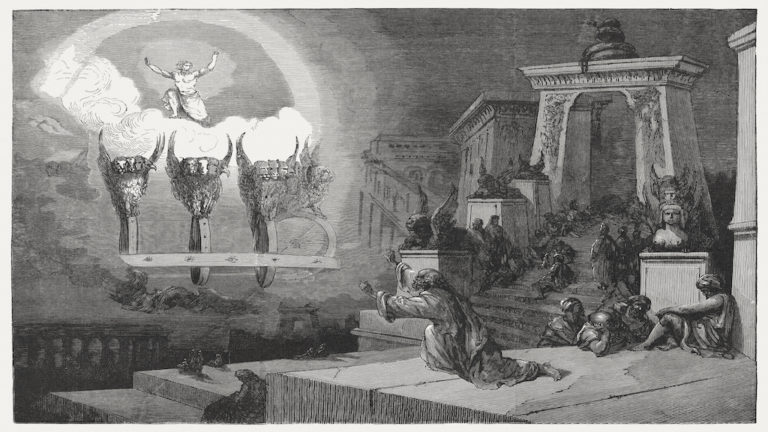
Ezekiel is one of the most curious figures in the Old Testament. His visions are reminiscent of visitations from other-dimensional beings, and the Book created in his name — the Book of Ezekiel — is the foundation for Merkava mysticism, a school of thought that has survived to this very day. It takes a discerning and informed mind to parse metaphor from historical reality, but both are equally helpful in discovering more about the mystical path created in the shadow of this most mysterious character of early Jewish mysticism.
Merkava (also spelled Merkabah, Merkaba, and Merkavah) is the Hebrew word for “chariot,” and it refers to the throne-chariot of God described by the prophet Ezekiel. So powerful and moving was the description given by Ezekiel that a sect of devotees created Merkavah mysticism, which began to flourish in ancient Palestine during the 1st century AD. When the Jews lost their homeland and were sent wandering to the corners of the earth, the center of Merkava mysticism was relocated from the 7th to the 11th century in Babylonia.
Overlapping with Hekhalot literature, the story of Ezekiel’s vision tends to be grouped within the same category of biblical passages as the Dead Sea Scrolls found at the Qumran caves, the Book of Enoch, and other biblical Apocrypha.
Ezekiel’s Vision; Chariot Mysticism in Biblical Passages
The earliest mystics of the Merkabah in Judaism deeply contemplated the spectacular vision that opens the Book of Ezekiel, one of the Jewish texts. In this event, the prophet encounters a wondrous manifestation from the highest heaven. Like a dream, Ezekiel’s vision leaves the reader confused, enchanted, and searching for meaning. The question remains whether what the prophet had seen was a hallucination, an actual visitation by otherworldly (perhaps interdimensional) beings, or something else that was lost in the attempt to describe it.
Ezekiel describes in great detail and awe what occurred: “In the thirtieth year, on the fifth day of the fourth month, when I was in the community of exiles by the Chebar Canal, the heavens opened, and I saw visions of God…[Ezek 1:4] I looked, and lo, a stormy wind came sweeping out of the north—a huge cloud and flashing fire, surrounded by a radiance; and in the center of it, in the center of the fire, a gleam as of amber…”
As the cloud approaches closer, Ezekiel sees four “living creatures,” or living beings, each with human-like characteristics but with four faces, four wings, and a single straight leg with a calf’s hoof. The hands of the creatures were visible to Ezekiel from underneath their wings. Because they had four faces, corresponding to the compass points, they did not need to turn to encounter a new direction. Ezekiel described the faces as a human face in front, a lion’s face to the right, an ox to the left, and an eagle in back.
Perhaps the most notable aspect of Ezekiel’s account of the chariot is the wheels. He said, “[Ezek 1:15] As I gazed on the creatures, I saw one wheel on the ground next to each of the four-faced creatures. As for the appearance and structure of the wheels, they gleamed like beryl. All four had the same form; the appearance and structure of each were as of two wheels cutting through each other.”
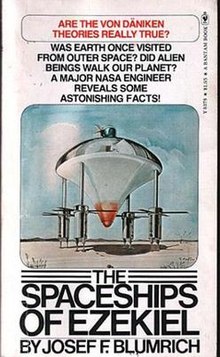
New York University professor Carl Ehrlich noted that each of the four wheels consisted of a wheel within a wheel.
Possibly, the text was an attempt to describe a wheel with the ability to face or move in every direction, as exemplified by the four-faced creatures.
“In this manner, the two parts of the wheels are described as being perpendicular to each other rather than parallel, once again emphasizing the ability of the wheels to convey the creatures in whatever direction they pleased without having to change position or orientation … The concept so fascinated the engineer turned ufologist, Josef Blumrich, that he actually invented the omnidirectional wheel and patented it.”
Ezekiel’s description of the wheel is quite unlike inanimate wheels known to the people of his day. These wheels had the spirit of the creatures within them, as well as eyes along their rims.
For some, the wheels of Ezekiel’s vision bring to mind the concept of a biological craft of sorts that is known to science fiction and UFOlogists alike. Trevor James Constable, author of The Cosmic Pulse of Life: The Revolutionary Biological Power Behind UFOs, posits the idea that our atmosphere has been home to huge, invisible living organisms that are sometimes confused with spacecraft when they became visible.
Compare Constable’s theory to what witnesses of a 2016 UFO over the skies of Guadalajara, Mexico, reported overhead, as “a translucent light blue object, as moving like a living, breathing animal and almost swimming through the sky.”
The Focus of Merkava Mystics
Mendel Dubov, of the Rabbinic College of America, Morristown, NJ, explained that the portion of the Old Testament detailing Ezekial’s vision is the primary source for the gnostic Jewish tradition known as Kabbalah. The Ezekiel narrative describes, in physical terms, a spiritual reality. “It is impossible to interpret any part of this description in a literal way, as it is only an allegory for metaphysical concepts.”
In Ezekiel’s vision, the prophet was shown images of the physical, while understanding that they corresponded to spiritual, Godly, concepts. “This style is replicated in most Kabbalistic works, where much of the teachings are also taught via physical metaphor. The sages throughout the ages warned that the student of Kabbalah Jewish mysticism must ‘divest the words from their physicality’ and be knowledgeable enough to do so,” wrote Dubov.
But What Did the Vision Actually Mean?
Especially because Ezekiel’s vision was his own, only he could know exactly what it meant. But if we enter the world of any true school of mysticism, we may find some commonality of thought and experience. By integrating Ezekiel’s vision with other texts, argues David R. Blumenthal, Emory University, Hoter ben Shelomo, a Jewish 15th-century savant from Yemen interpreted the experience as a complete cosmology describing the downward flow of divine energy (or light) and the upward flow of the human soul (or spirit).
Ezekiel’s vision was a metaphor of consciousness. Blumenthal wrote that Hoter interpreted the radiance of the electrum (a naturally occurring alloy of gold and silver, with trace amounts of copper and other metals) in the vision to represent the emanation of the intelligence. He interpreted the radiance and fire surrounding the vision as the process by which the forms (mystical thoughts) were impressed into the matter.
“As to the upward flow of the human soul, Hoter taught that man must learn about the structure of the cosmos from revelations such as Ezekiel’s vision and, then, he must meditate his way up the vision: from the earth to the elements, to the spheres and their characteristics, to the Prime-Matters, to the Universal Soul, and finally to the Agent Intelligence.”
This cosmology and ascent of a human being into enlightenment is the cornerstone in today’s Gnosticism of the mystical Kabbalah movement, and it is also common to the teachings of mystical sects of Christianity, Islam, Hinduism, and others. The goal is to meditate upon the sense of self until the divine is revealed.
Skeptics Dismiss the Ancient Astronaut Theory
More than any other Bible writer, Ezekiel was extremely detail-oriented, as seen in his very accurate model of the layout of an entire city, as well as a huge temple complex that can be constructed by using his specifications. It’s argued that Ezekiel is merely describing the throne of God, which rests on a platform, and that platform is supported by four cherubim on each corner.
This is a common description of holy thrones of the Bible that includes four wheels next to angels. In the Book of Daniel, the prophet mentions that the throne of God has “wheels” (Daniel 7:9). The artwork of the ancient world reveals that there are thousands of pieces of art illustrating various elements that Ezekiel described of God’s throne-chariot.
Despite the claims of debunkers, the mystery of Ezekiel’s experience prevails because, like a dream, it is fraught with metaphor and symbols. What debunkers do not address are the meanings of the vision. Instead, they focus on the physical description.
Mendel Dubov explained that the experience of the Divine chariot, “as lofty as it is, can be considered only of secondary importance.” And so a materialist argument based on the disassembling of a metaphorical image misses the point completely. The essence of the mystery, then, is not in the “what,” but rather in the “why” — that which gives Merkaba meaning, and that which held Ezekiel spellbound.
Has the City of Atlantis Been Discovered in the Eye of the Sahara?
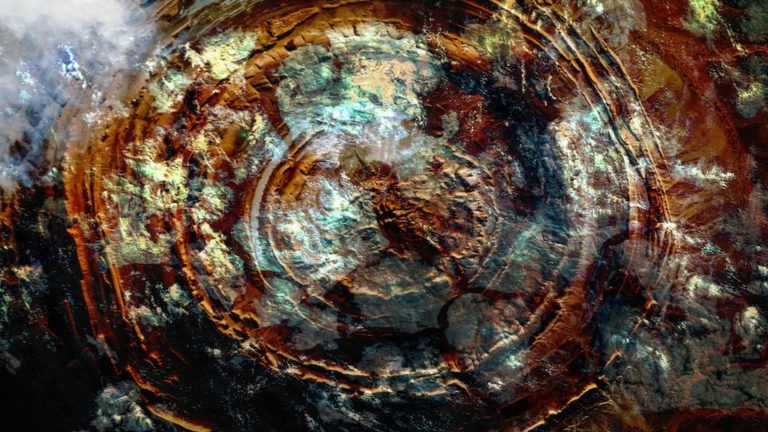
If you feel challenged by our relatively unconscious society, you may be one of the many dreamers who fantasize about the lost city of Atlantis. Some believe the Eye of the Sahara in Mauritania holds the secrets we’ve long imagined to be true. Stretching 14.6 miles across, the Eye appears to be from another world. Considering Plato’s writings on the subject, it’s possible this incredible structure is the final resting place of millions of Atlanteans.
While Plato’s descriptions of Atlantis are epic and mind-blowing, many believe he barely scratched the surface. He described Atlantis as a massive formation of concentric circles, alternating between land and water, similar to how the Eye is seen today. He emphasized that Atlantis was a wealthy, utopian civilization that created the basis for the Athenian democratic model. Plato then described the land as rich in gold, silver, copper, other precious metals, and gemstones.


